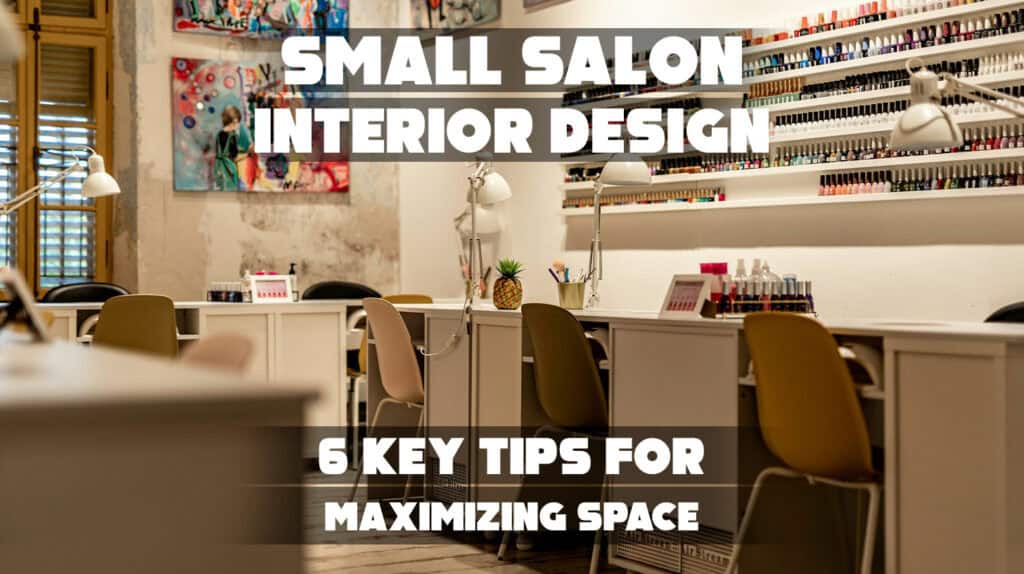Dreaming of a home that feels both timeless and warm—but not sure how to get there? You’re not alone. Many homeowners crave a space that reflects both history and comfort without sacrificing style.
If you’ve ever felt overwhelmed by soulless, modern trends, this guide is for you. You’re the kind of person who values character, tradition, and authenticity.
We’re here to help. With a deep understanding of design heritage and modern lifestyle needs, we’ll guide you through creating a space inspired by Spanish Colonial style interior design.
Here’s the plan:
- Explore the roots of Spanish Colonial design
- Identify key elements like texture, color, and materials
- Learn how to blend old-world charm with modern living
Keep reading to discover how modern Spanish Colonial interior design can transform your home into a rich, welcoming sanctuary.
By the end, you’ll have a clear vision and actionable tips to create a home full of history, warmth, and timeless beauty.

Photo by Warren LeMay
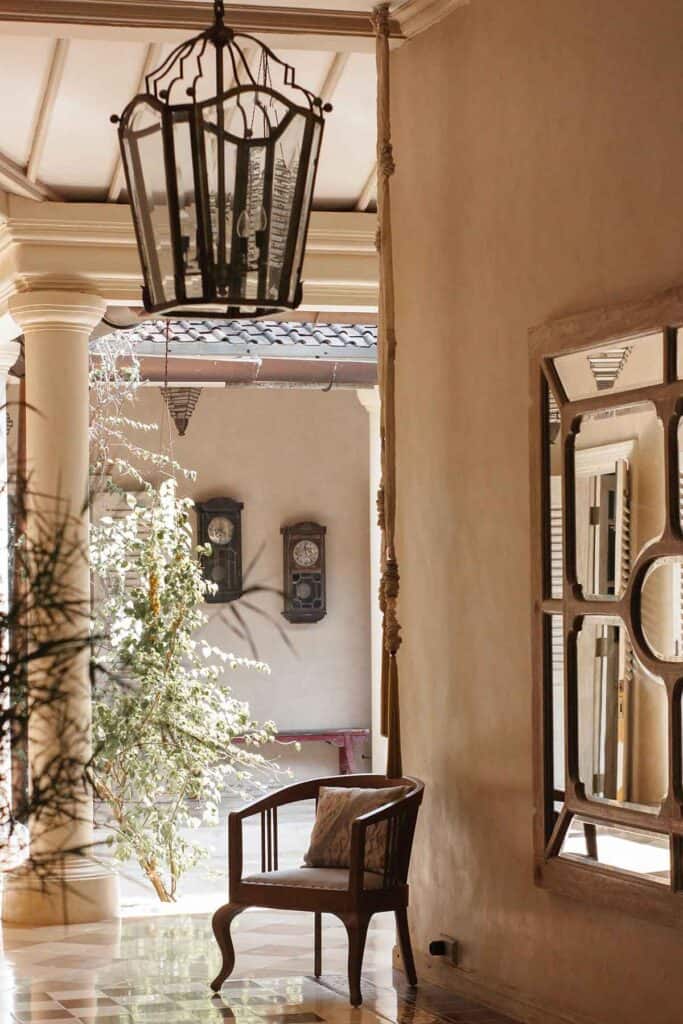
Defining Features of Spanish Colonial Interior Design
Video by HOME DECOR 101
Spanish Colonial interior design centers on natural materials, warm colors, and distinctive architectural details. It balances historic craftsmanship with functional elements to create spaces that feel both inviting and timeless.
Emphasis on texture, light, and structural form shapes the look found in traditional Spanish colonial homes and modern Spanish style adaptations.
Spanish Colonial style originated in the 16th century with Spanish settlers in the Americas. It draws heavily from Mediterranean and Moorish design, blending Spanish craftsmanship with indigenous materials. This heritage is evident in the use of hand-painted tiles, wrought iron, and carved woodwork.
The influence extends to iconic regions like Santa Barbara, where Spanish Colonial architecture shaped local design identity. These origins inform the style’s emphasis on detailed woodworking, terracotta flooring, and ornamental ironwork, all key elements in authentic Spanish style homes.
1. Color Palettes and Materials

Color palettes in Spanish Colonial interiors favor warm, earthy tones like terracotta, ochre, and deep reds. White or off-white stucco walls serve as neutral backdrops, enhancing the warmth of these colors. Dark wood, often in exposed beams and heavy furniture, contrasts with lighter walls to add depth.
Materials are natural and tactile, including terra-cotta tile floors, plastered walls, and iron accents. Textured fabrics like wool or leather complement the rustic feel. This material selection supports the style’s focus on durability and handcrafted detail.
2. Architectural Elements
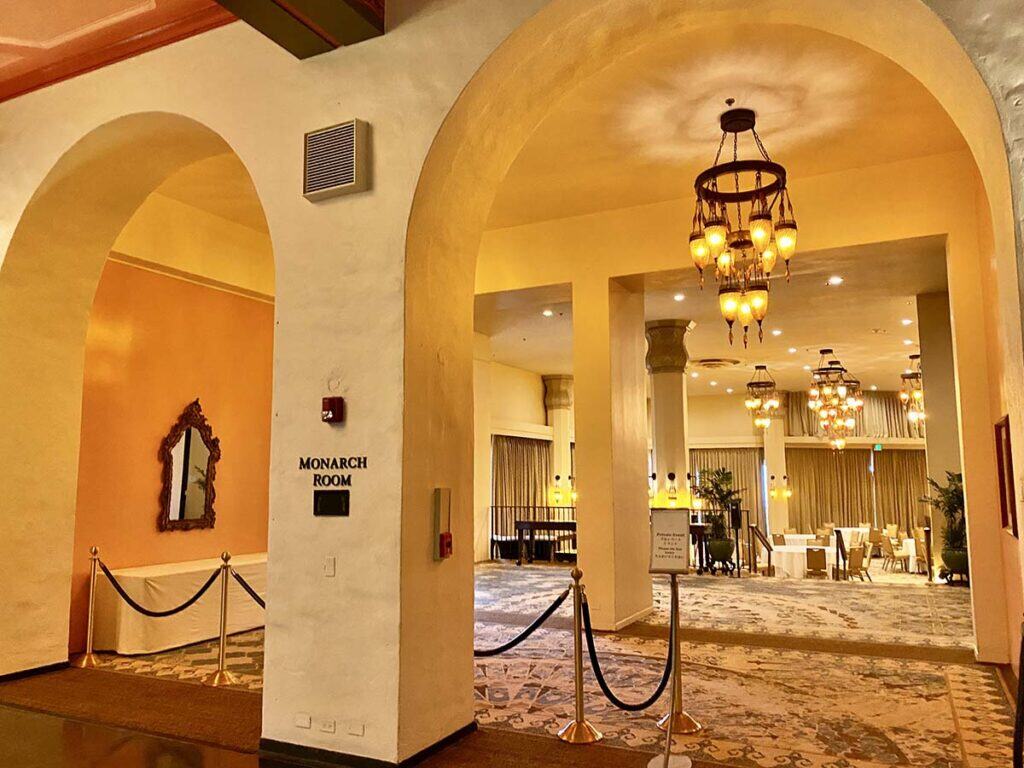
Architecturally, Spanish Colonial interiors showcase soft arches, vaulted ceilings, and thick stucco walls. Arches frame doorways and windows, lending softness and elegance. Columns, often simple and robust, provide structural and decorative function.
Key design elements include carved wooden doors, wrought iron light fixtures, and built-in niches or alcoves. Courtyards or patios often integrate with interior space through large, arched openings. These features combine to create a harmonious blend of indoor and outdoor living found in Spanish Colonial architecture.
See Also Eclectic Maximalist Interior Design
Signature Furnishings and Décor in Spanish Colonial Interior Design
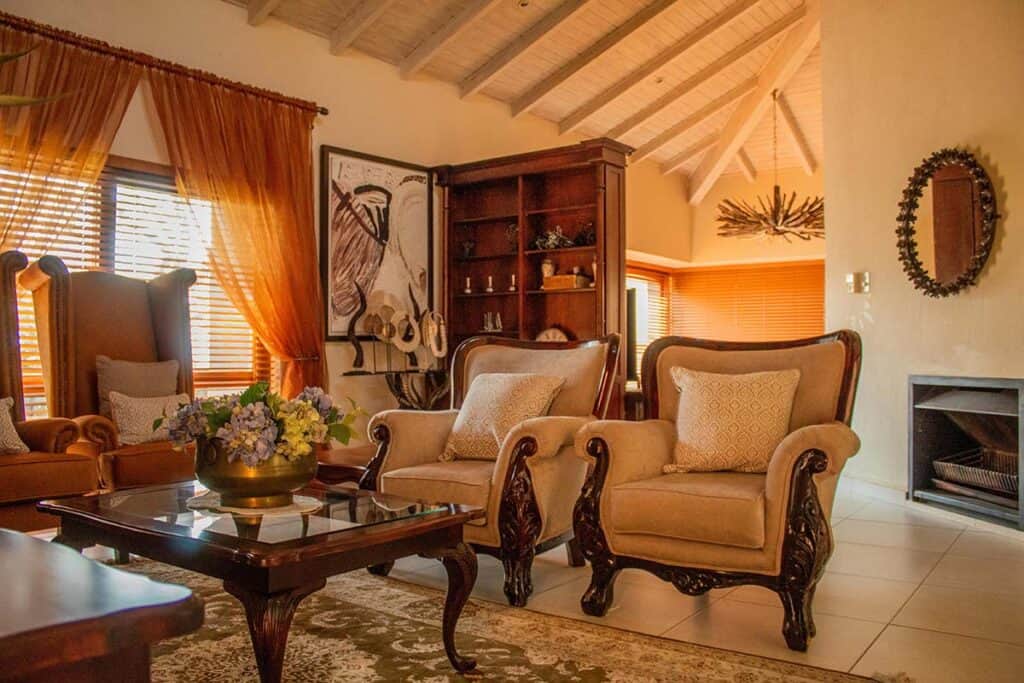
Spanish Colonial interior design features a thoughtful mix of materials and styles that create a warm and inviting atmosphere. It balances vintage elements with functional pieces, highlighting natural textures and traditional craftsmanship.
Furniture in Spanish Colonial interiors often showcases solid wood, especially dark-stained hardwoods like walnut or mahogany. Pieces tend to be robust and hand-carved, with simple lines combined with ornate details.
Common types include heavy wooden beds with turned posts, carved armoires, and leather-upholstered chairs. Wrought iron is frequently used in furniture accents such as bed frames and tables, adding strength and decorative interest.
The style embraces vintage and handcrafted looks but adapts well to modern interpretations by focusing on clean forms enhanced with traditional finishes. This approach supports both a historical connection and contemporary living needs.
3. Textiles and Patterns
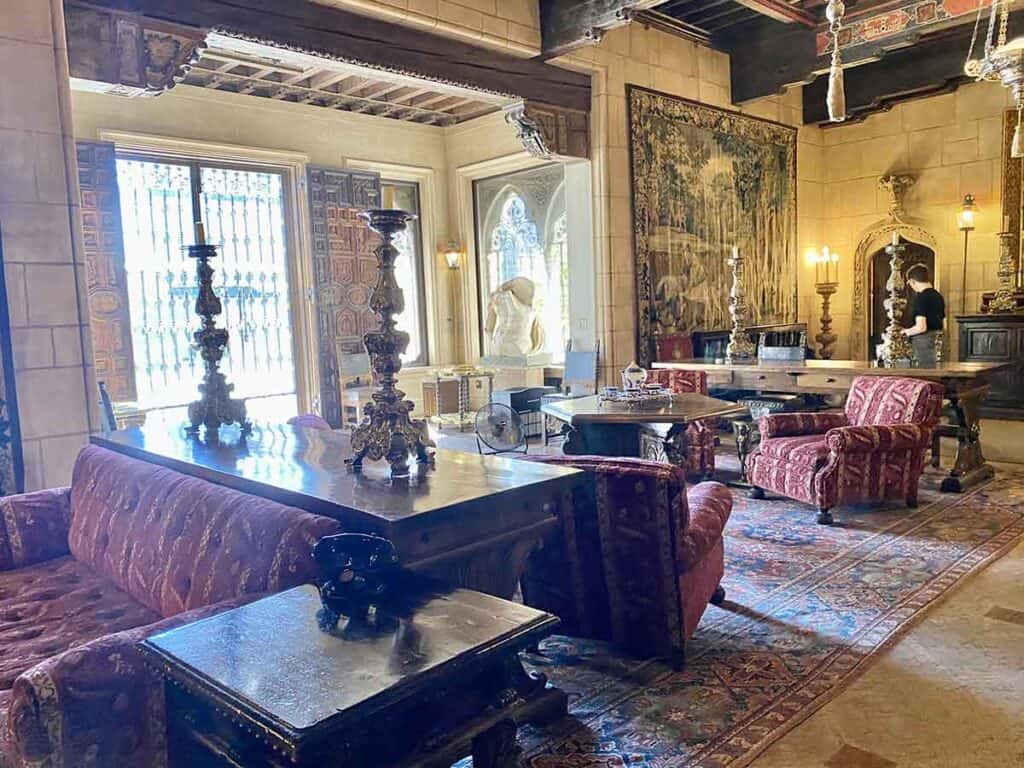
Textiles play a significant role in Spanish Colonial interiors, contributing color and texture. Upholstery and window treatments often feature woven fabrics with geometric or floral patterns inspired by Mediterranean and Moorish designs.
Warm, earthy tones like terracotta, ochre, and deep reds dominate. Handwoven textiles, such as wool rugs and embroidered cushions, provide a tactile contrast to the hard surfaces of wood and stone.
Patterns rarely overwhelm the space; instead, they create visual interest through subtle repetition. Natural fibers are preferred due to their durability and the authentic feel they bring to the room.
4. Decorative Accents and Accessories
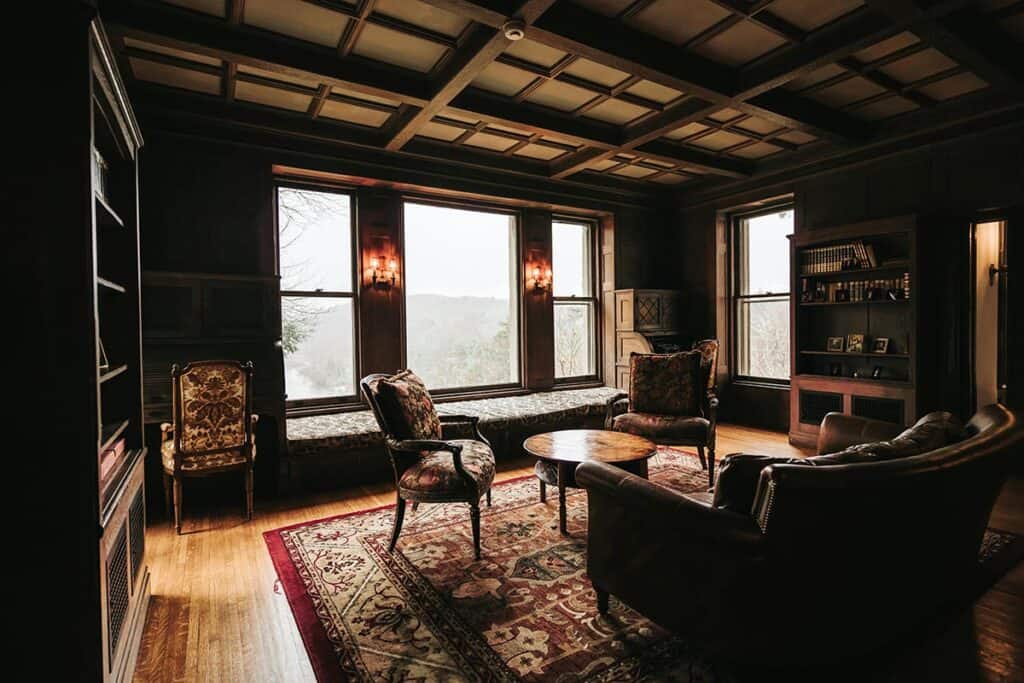
Decorative accents emphasize craftsmanship and natural materials. Wrought iron pieces—such as chandeliers, wall sconces, and decorative grilles—are signature elements that add detail without appearing harsh.
Pottery and ceramics with handcrafted glazes often serve as table centerpieces or shelf decor. Terra cotta and glazed tiles contribute to the architectural aesthetic, often visible on floors or around fireplaces.
Accessories tend to be functional yet ornamental, like carved wooden chests and vintage mirrors with distressed finishes. These items echo the Spanish style’s blend of utility and artistry, reinforcing the welcoming environment typical of this design style.
Modern Interpretations in Spanish Colonial Interior Design
Modern Spanish Colonial interior design merges classic elements with updated aesthetics to create spaces that feel both authentic and fresh. This approach focuses on key architectural details and materials while adapting color palettes and layout to suit contemporary lifestyles.
Modern interpretations highlight features like plaster walls, wooden beams, and wrought iron accents as main focal points. These traditional elements are balanced with a neutral backdrop or a minimalist color palette to avoid overwhelming the space. For example, a living room might feature exposed wooden beams paired with simple, light-colored walls to emphasize texture without clutter.
Using patterned tiles in focused areas like kitchen backsplashes or entryways brings vibrant detail without dominating the room.
In regions like Southern California, where the style is popular, designers often marry indoor and outdoor living spaces to enhance the authentic feel. The result retains the historic charm while offering clean lines and open layouts typical of modern homes.
To adopt Spanish Colonial style, homeowners should start by emphasizing architectural features such as wrought iron light fixtures or ceiling fans and bold wooden furniture. Walls in soft plaster tones create a warm, textured base that contrasts well with bright, patterned tile accents.
A neutral color palette with earth tones—like terracotta, beige, and soft whites—keeps the space grounded. To avoid clutter, a minimalist approach to decor helps preserve the style’s elegance. Focus on key pieces like a carved wooden table or an ornate iron chandelier for visual interest.
See Also Chinese Interior Design
Spanish Colonial Interior Design: A Recap
Spanish Colonial interior design continues to captivate with its timeless blend of rustic elegance and historical charm. Rooted in centuries-old traditions, this design ethos remains relevant today through its seamless integration of natural materials, warm tones, and handcrafted details.
What sets modern Spanish Colonial interior design apart is its ability to honor these classic features while embracing contemporary sensibilities—creating spaces that feel both grounded and sophisticated.
Whether you’re drawn to its signature arches and textured walls or inspired by the rich patterns and vintage furnishings, Spanish Colonial style interior design offers a versatile and welcoming aesthetic.








